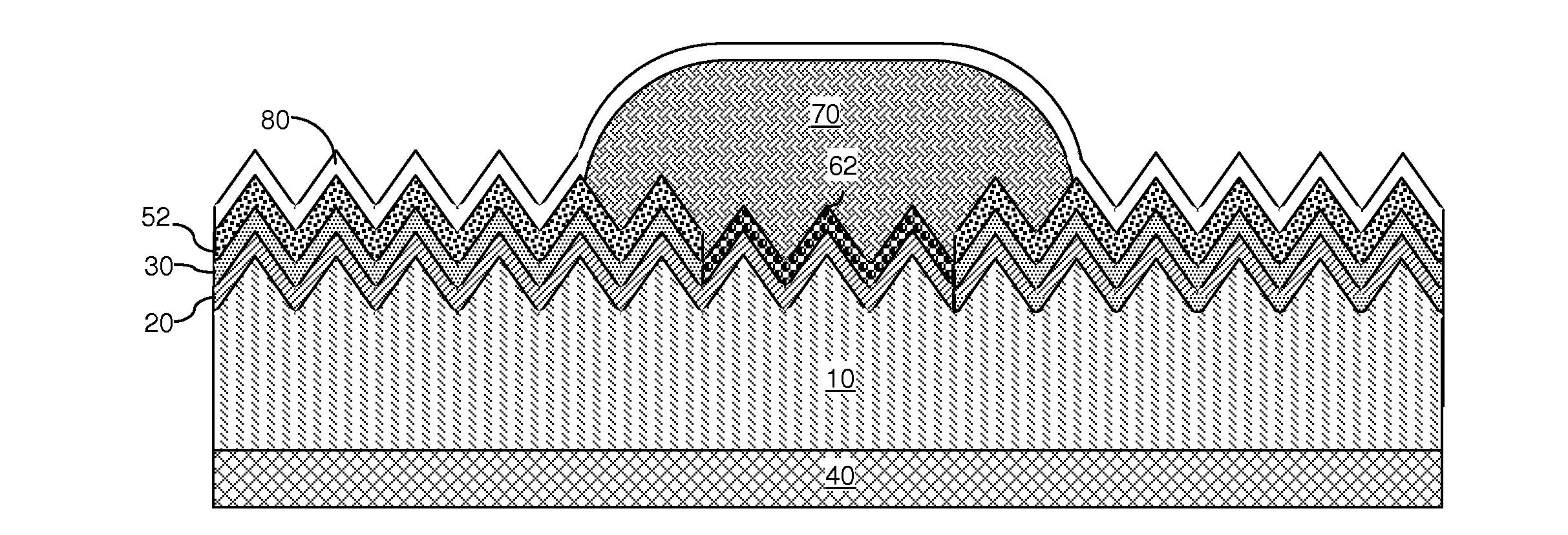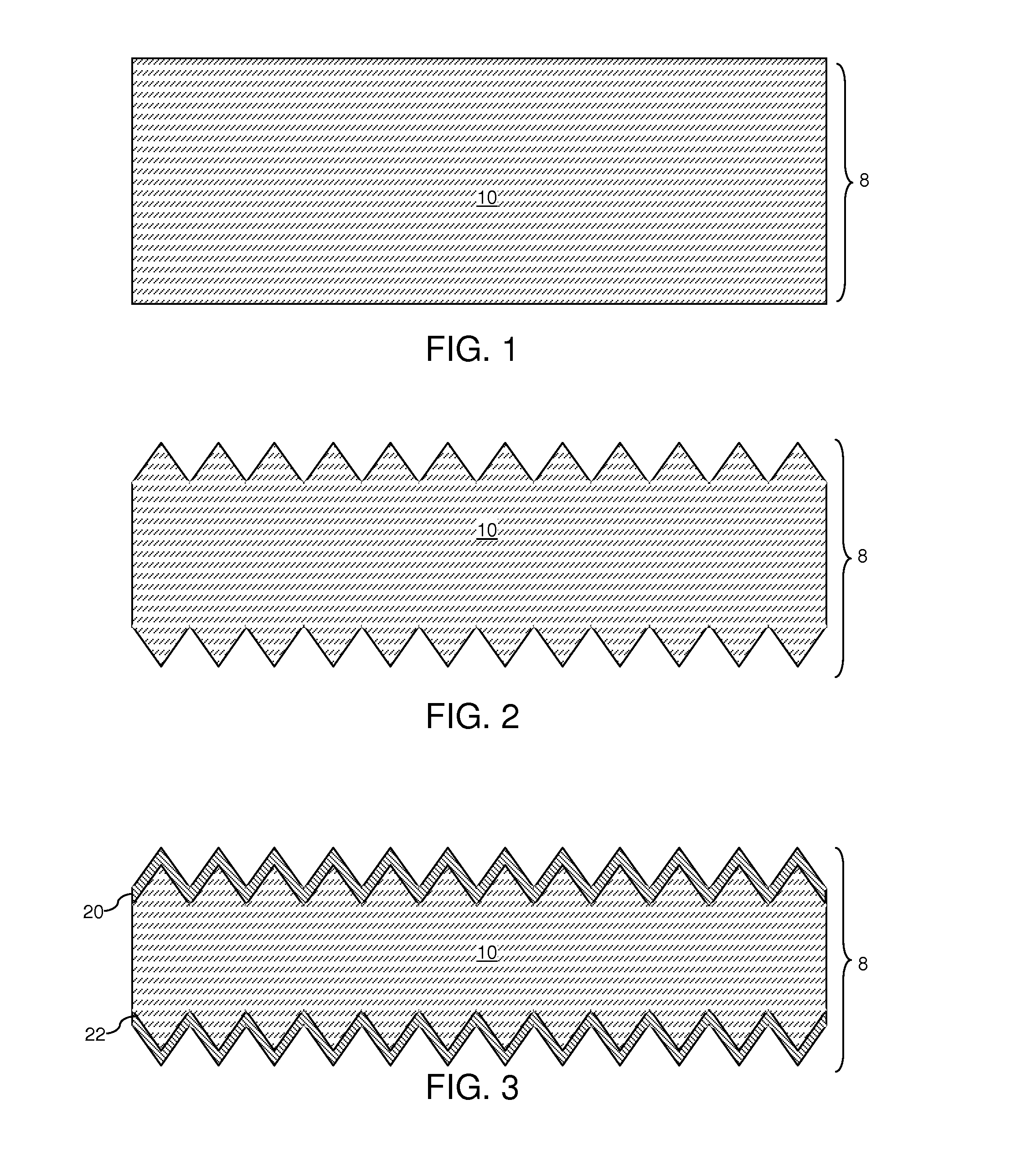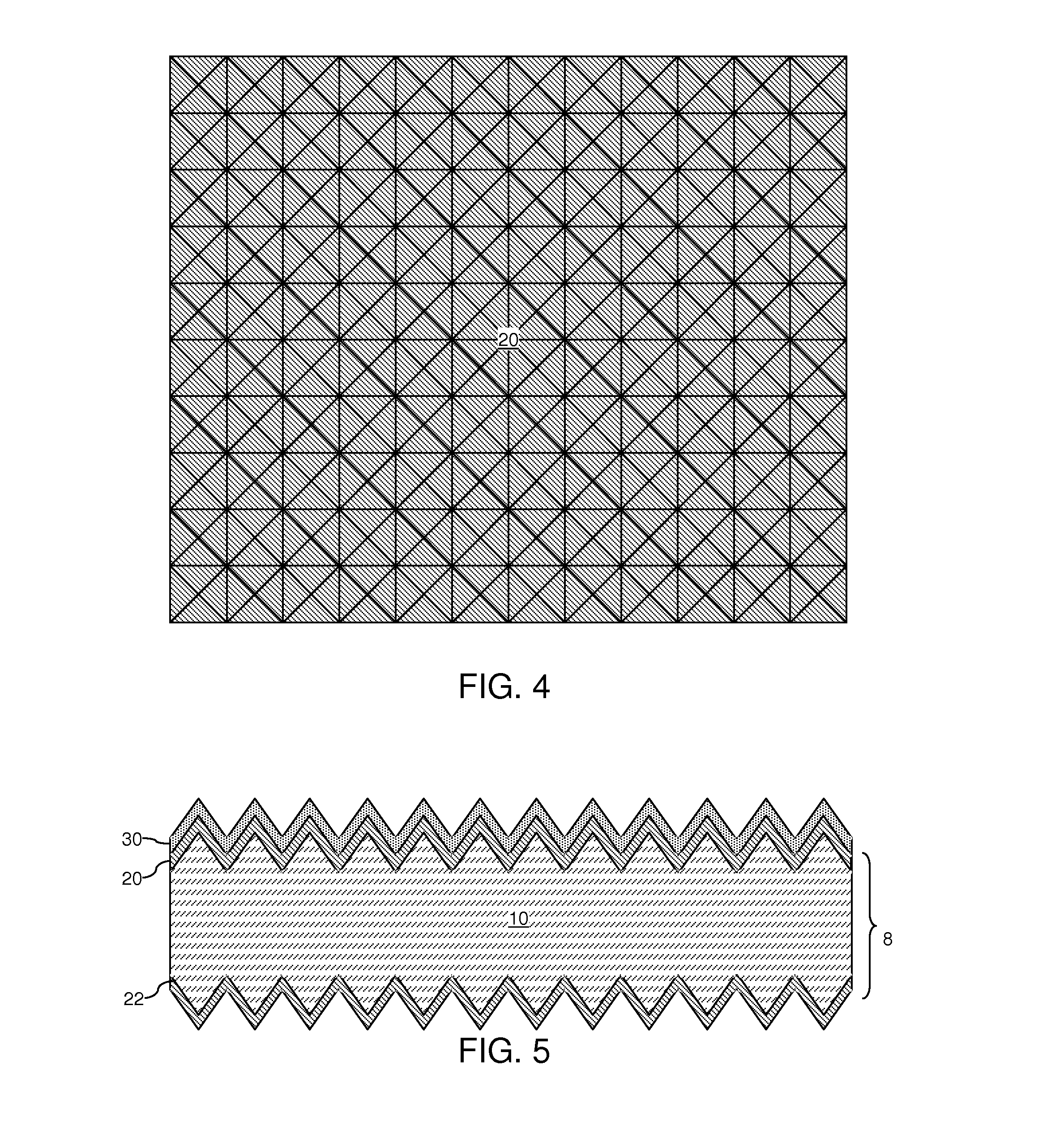Integration of a titania layer in an Anti-reflective coating
a titania layer and anti-reflective coating technology, applied in the field of anti-reflective coating, can solve the problem and achieve the effect of reducing the efficiency of solar cells and reducing electrons
- Summary
- Abstract
- Description
- Claims
- Application Information
AI Technical Summary
Benefits of technology
Problems solved by technology
Method used
Image
Examples
Embodiment Construction
[0031]As stated above, the present disclosure relates to a method of forming an anti-reflective coating including a titania layer and a structure including the same, which are now described in detail with accompanying figures. It is noted that like reference numerals refer to like elements across different embodiments. The drawings are not necessarily drawn to scale.
[0032]Referring to FIG. 1, an exemplary structure according to an embodiment of the present disclosure includes a semiconductor substrate 8 that includes a semiconductor layer 10. The semiconductor layer 10 includes a semiconductor material. The semiconductor material can be silicon, germanium, a silicon germanium alloy, a silicon carbon alloy, a silicon germanium carbon alloy, a III-V compound semiconductor material, a II-VI compound semiconductor material, or any other semiconductor material known in the art. The semiconductor material of the semiconductor substrate can be single crystalline, polycrystalline, or amorph...
PUM
| Property | Measurement | Unit |
|---|---|---|
| temperature | aaaaa | aaaaa |
| temperature | aaaaa | aaaaa |
| thicknesses | aaaaa | aaaaa |
Abstract
Description
Claims
Application Information
 Login to View More
Login to View More - R&D
- Intellectual Property
- Life Sciences
- Materials
- Tech Scout
- Unparalleled Data Quality
- Higher Quality Content
- 60% Fewer Hallucinations
Browse by: Latest US Patents, China's latest patents, Technical Efficacy Thesaurus, Application Domain, Technology Topic, Popular Technical Reports.
© 2025 PatSnap. All rights reserved.Legal|Privacy policy|Modern Slavery Act Transparency Statement|Sitemap|About US| Contact US: help@patsnap.com



